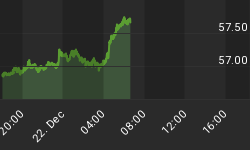Last week, the G-20 meetings did not produce an expanded bailout fund for the eurozone. While this may bode well for the long-term solvency of the member-states (moral hazard and all), it has also triggered a market reaction that I expect to help destabilize the common currency. Yesterday's market moves suggested that this development is good for the dollar and bad for gold. Allow me to step back from the stampeding herd to evaluate whether they are, in fact, moving in the right direction.
The argument for the dollar and against gold is simplistic, and I will evaluate it against the four-stage collapse I see ahead for the Western currencies.
Arguing that gold is a hedge only against inflation, and taking current inflation figures at face value, mainstream analysts have concluded that gold is grossly overvalued - that it may, in fact, be the latest asset bubble to arise. However, these analysts fail to account for why gold is a hedge against inflation: it is ultimately an insurance policy against runaway currency collapse. In other words, it's intended as a longer-term, wealth-preserving purchase. Yes, some pit traders may be trying to make a quick buck shorting gold and going long on dollars, but for individual investors, following suit would leave them vulnerable to what may prove to be ahead. That is, a phased destabilization of the euro, leading to a possible collapse of the US dollar. In such circumstances, even today's volatile prices for gold and silver would look attractive.
Phase One of the threatened catastrophe is sovereign debt crisis, which is effectively camouflaging a currency crisis. The Greek default is significant as the first crack in the dam. But Greece is a relatively small problem. The bigger threat is Italy, with its $2.4 trillion of debt and a 10-year bond yield having just surpassed the critical 7 percent level. This is the ruinous milestone at which the cost of new debt money surpasses the economic growth rate plus inflation. Italy faces massive debt refunding, falling buyer interest, and no hope of a bailout. If Italy were to default, it could threaten rapid contagion to Portugal, Ireland, Spain, and other larger eurozone countries, including perhaps France. In such an event, most international banks and institutional investors, including those in the US, could suffer severe, possibly total, losses on their holding of certain sovereign bonds. MFGlobal is but one speculative example of a looming secular trend. Worse still, the writers of credit default swap (CDS) derivatives, including many German Landesbanks (state-level banks) and major US banks, could suffer crippling losses.
This would lead to Phase Two of the collapse: a renewed and far larger banking crisis. This, in turn, could bring stock markets tumbling and threaten major institutional investors, including politically sensitive pension and insurance companies. In addition, banks would become extremely wary of lending to each other. Likely, the interbank market would freeze, but far more severely than in 2008. It could result in curtailed lending and even the recall of short-term corporate funding and call-loans. This could cause a dramatic spike in US bank failures. Unwary depositors who have failed to watch their banks closely could find their insured funds frozen, perhaps for months, as the FDIC reorganizes the problem banks - and perhaps even waits for its own bailout. This would add further downward pressure to economic growth.
Meanwhile, the cascading banking crisis would likely push Europe into a severe recession, even a depression. As the EU accounts for some 22 percent of world trade, a European depression would no doubt drag down the US even further. In response, the price of precious metals may face severe selling pressure as liquidity becomes paramount.
This would present an opportunity for long-term gold and silver investors.
Phase Three would be a restructuring or dissolution of the euro and possibly a stampede into the US dollar, sending its price and US Treasuries temporarily upwards. With a far stronger dollar, the price of most commodities, including precious metals, may fall temporarily in dollar terms. We are seeing a preview of this dynamic with today's news on Italy.
However, to reallocate one's portfolio in reaction to such a move could put an investor in jeopardy. That is because Phase Four, the most alarming, would be investors' realization that the US dollar lies at the root of the international currency collapse and is itself vulnerable. Likely, this panic flight from the dollar would develop suddenly, and perhaps in undreamed of volumes. Doubtless, the speed and size of a stampede out of paper currencies and into precious metals will take many investors by surprise - just as the Credit Crunch in 2008 did. As the realization of currency catastrophe spreads, the price of silver may start to rise faster than even gold.
There's an old saying that "the higher you fly, the harder you fall." The US government is, by any measure, the luckiest government in centuries. It has risen to unforeseen heights of monetary excess - and has been rewarded for doing so. But it looks like lower flying planes are starting to stall out, and one can only imagine - from this height - how fast and how far the US may fall.
My humble advice is not to try to time it, but rather to use your golden parachute before it's too late.
For an even more in depth look at the prospects of international currencies, download Peter Schiff's and Axel Merk's Five Favorite Currencies for the Next Five Years.
Subscribe to Euro Pacific's Weekly Digest: Receive all commentaries by John Browne, Peter Schiff, and other Euro Pacific commentators delivered to your inbox every Monday.
For a great primer on economics, be sure to pick up a copy of Peter Schiff's hit economic parable, How an Economy Grows and Why It Crashes.















